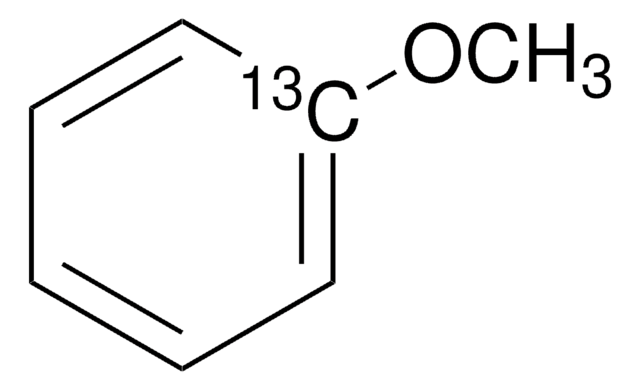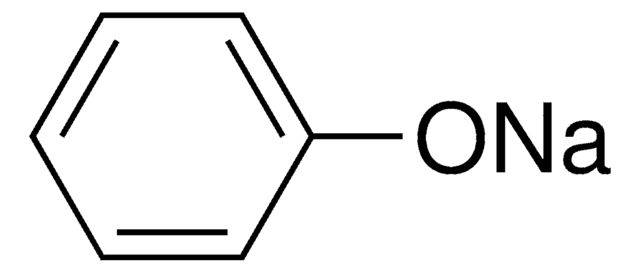96109
Anisole
analytical standard
Synonyme(s) :
Methoxybenzene, Methyl phenyl ether
About This Item
Produits recommandés
Qualité
analytical standard
Niveau de qualité
Densité de vapeur
3.7 (vs air)
Pression de vapeur
10 mmHg ( 42.2 °C)
Pureté
≥99.9% (GC)
Température d'inflammation spontanée
887 °F
Durée de conservation
limited shelf life, expiry date on the label
Technique(s)
HPLC: suitable
gas chromatography (GC): suitable
Indice de réfraction
n20/D 1.516 (lit.)
n20/D 1.518
Point d'ébullition
154 °C (lit.)
Pf
−37 °C (lit.)
Densité
0.995 g/mL at 25 °C (lit.)
Application(s)
cleaning products
cosmetics
environmental
flavors and fragrances
food and beverages
personal care
Format
neat
Chaîne SMILES
COc1ccccc1
InChI
1S/C7H8O/c1-8-7-5-3-2-4-6-7/h2-6H,1H3
Clé InChI
RDOXTESZEPMUJZ-UHFFFAOYSA-N
Vous recherchez des produits similaires ? Visite Guide de comparaison des produits
Description générale
Application
Mention d'avertissement
Warning
Mentions de danger
Conseils de prudence
Classification des risques
Flam. Liq. 3 - STOT SE 3
Organes cibles
Central nervous system
Code de la classe de stockage
3 - Flammable liquids
Classe de danger pour l'eau (WGK)
WGK 2
Point d'éclair (°F)
109.4 °F - closed cup
Point d'éclair (°C)
43 °C - closed cup
Équipement de protection individuelle
Eyeshields, Faceshields, Gloves, type ABEK (EN14387) respirator filter
Choose from one of the most recent versions:
Déjà en possession de ce produit ?
Retrouvez la documentation relative aux produits que vous avez récemment achetés dans la Bibliothèque de documents.
Les clients ont également consulté
Notre équipe de scientifiques dispose d'une expérience dans tous les secteurs de la recherche, notamment en sciences de la vie, science des matériaux, synthèse chimique, chromatographie, analyse et dans de nombreux autres domaines..
Contacter notre Service technique














